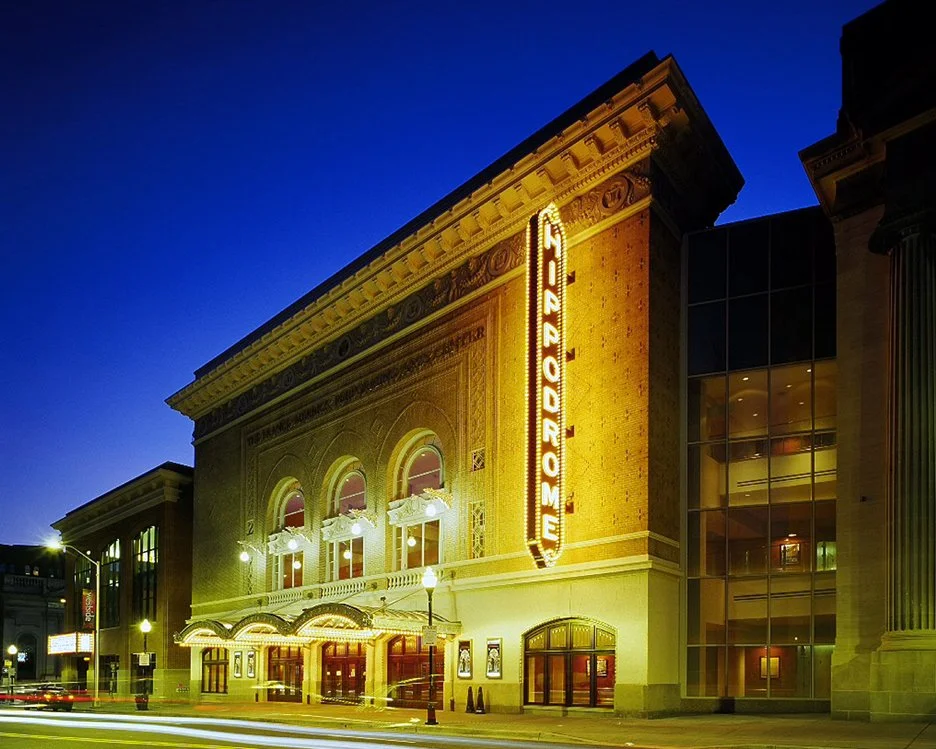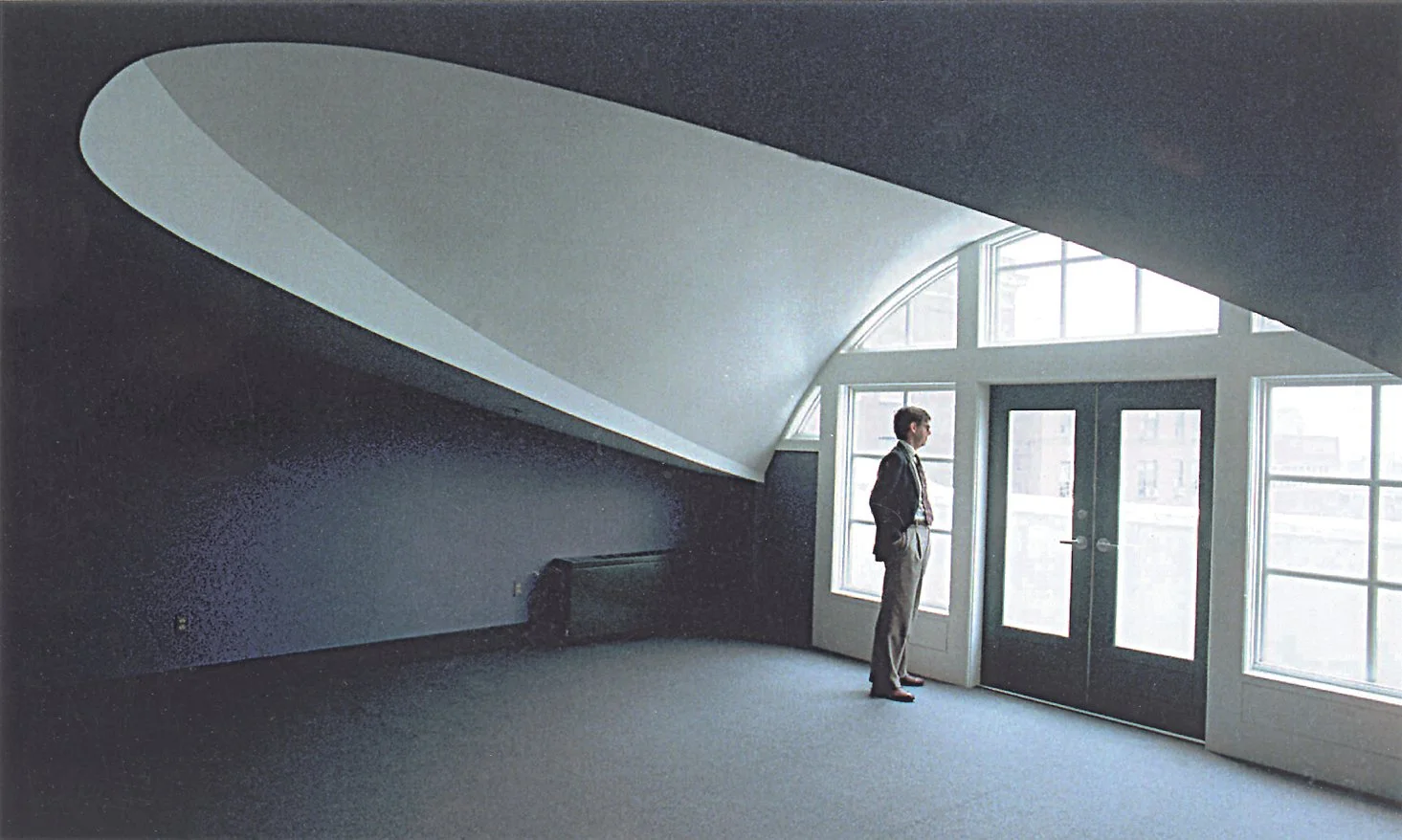well-considered design is at the core of architecture, McCormick says.


If you can imagine a young child telling their teacher, “I want to be an Architect when I grow up!” then you’ve pictured Rebecca McCormick at the very beginning of her professional journey.
“I was pragmatic even as a kid and realized that a career in art would be challenging,” says
Rebecca McCormick, AIA, an Architect based out of Murphy & Dittenhafer’s York, Pennsylvania office. “Maybe someone steered me toward Architecture, and then it just grew from there.”
McCormick has come a long way since the days of aspirational vocation planning, and has — admittedly — become even more interested in the nuances of the field as she rounds out seven years at M&D. But how has the journey been to get to this point, and what’s next?
An Architect, from start to finish
McCormick received her Master’s in Architecture from Tulane University in 2005, and has been building her career ever since (not to mention while also building a family). She admits she’s been very lucky with extremely supportive family and employers along the way, but knows it’s not always the case for women in the field. Even so, it remains a challenge to be taken seriously on construction sites and related locales (today, women make up just 10% of the construction industry, which is the most it has ever been).
At M&D in particular, McCormick has been given the opportunity to become a project manager and take on more of a leadership role, managing the design team and consultants. Being able to take a project from the conceptual phase through construction is rewarding, she says.
A portfolio that speaks for itself
In her effort to learn how to handle bigger projects and manage projects throughout the pipeline, McCormick says a couple of projects really stand out, one of which involves designing a fire station. “The job is different every single day, which makes it exciting,” she says.
Creating historic district guidelines for Baltimore County are another career-defining moment for McCormick. “Even though they were more of a written document, it was a lot of listening, she says. “And understanding what direction community and committee members wanted their county to go in, in terms of preserving historic Architecture.”
Having to lead those community discussions is still intimidating to her, McCormick admits. That’s just another way she’s growing as a person along with her career.
For McCormick, simple and clean design often wins
Fashion legend Coco Chanel famously advised people to take off one accessory before leaving the house for a cleaner, classier look. “I feel like I have the same philosophy for Architecture,” McCormick says. “Simpler and cleaner is often better.”
Even more importantly, McCormick says well-considered design, from the smallest intervention (like a covered bus stop) to something substantial (like a library or other community project), can bring a community together.
“You can design a space that feels welcoming or helps people feel at home, whether it's energizing them or relaxing them,” she says. For McCormick, her passion may have started with a deep interest in Architecture, but it evolved into a vested interest in the people who Architecture impacts.
As for the future of the industry, McCormick says she hopes more women stay the course beyond Architecture school, but she already sees things heading in the right direction. “You can start the licensure process more quickly than before,” she says, which will help people of different backgrounds and identities become deeply invested earlier on in their careers. Ultimately, diverse designers make designing for the community that much more of a given.
Like us on Facebook!
“Historic preservation has always been a hallmark of ours for our 40-year history,” says M&D President Frank Dittenhafer II. These 10 projects exemplify our passion for this work.
It’s the 40th year of Murphy & Dittenhafer Architects, so Frank Dittenhafer II, President, is taking the time to highlight some of our most influential projects over the decades.
We’re celebrating 40 years of influence in Pennsylvania and Maryland. With that, we couldn’t help but reflect on some of the most impactful projects from our history.
Harford Community College’s expanded new construction Chesapeake Welcome Center is a lesson in Architectural identity
At Murphy & Dittenhafer Architects, we feel lucky to have such awesome employees who create meaningful and impressive work. Meet the four team members we welcomed in 2024.
The ribbon-cutting ceremony at the new Department of Legislative Services (DLS) office building in Annapolis honored a truly iconic point in time for the state of Maryland.
As Murphy & Dittenhafer architects approaches 25 years in our building, we can’t help but look at how far the space has come.
Murphy & Dittenhafer Architects took on the Architecture, Interior Design, & Overall Project Management for the new Bedford Elementary School, and the outcome is impactful.
The memorial’s groundbreaking took place in June, and the dedication is set to take place on November 11, 2024, or Veterans Day.
President of Murphy & Dittenhafer Architects, Frank Dittenhafer II, spoke about the company’s contribution to York-area revitalization at the Pennsylvania Downtown Center’s Premier Revitalization Conference in June 2024. Here are the highlights.
The Pullo Center welcomed a range of student musicians in its 1,016-seat theater with full production capabilities.
“Interior designs being integral from the beginning of a project capitalize on things that make it special in the long run.”
Digital animations help Murphy & Dittenhafer Architects and clients see designs in a new light.
Frank Dittenhafer and his firm work alongside the nonprofit to fulfill the local landscape from various perspectives.
From Farquhar Park to south of the Codorus Creek, Murphy & Dittenhafer Architects help revamp York’s Penn Street.
Designs for LaVale Library, Intergenerational Center, and Beth Tfiloh Sanctuary show the value of third places.
The Annapolis Department of Legislative Services Building is under construction, reflecting the state capital’s Georgian aesthetic with modern amenities.
For the past two years, the co-founder and president of Murphy & Dittenhafer Architects has led the university’s College of Arts and Architecture Alumni Society.
The firm recently worked with St. Vincent de Paul of Baltimore to renovate an old elementary school for a Head Start pre-k program.
The market house, an 1888 Romanesque Revival brick structure designed by local Architect John A. Dempwolf, long has stood out as one of York’s premier examples of Architecture. Architect Frank Dittenhafer is passing the legacy of serving on its board to Architectural Designer Harper Brockway.
At Murphy & Dittenhafer Architects, there is a deep-rooted belief in the power of combining history and adaptive reuse with creativity.
University of Maryland Global Campus explores modernizing its administration building, which serves staffers and students enrolled in virtual classes.
The Wilkens and Essex precincts of Baltimore County are receiving solutions-based ideas for renovating or reconstructing their police stations.
The firm has earned the designation annually since 2016 in recognition of its commitment to supporting newer professionals in the field.
Murphy & Dittenhafer Architects recently completed the Design Development phase for a 20,000-square-foot building for Crispus Attucks York. Construction should begin in August.

































Murphy & Dittenhafer Architects is working hard and collaborating with the community on an urban planning study for South George Street in York City.